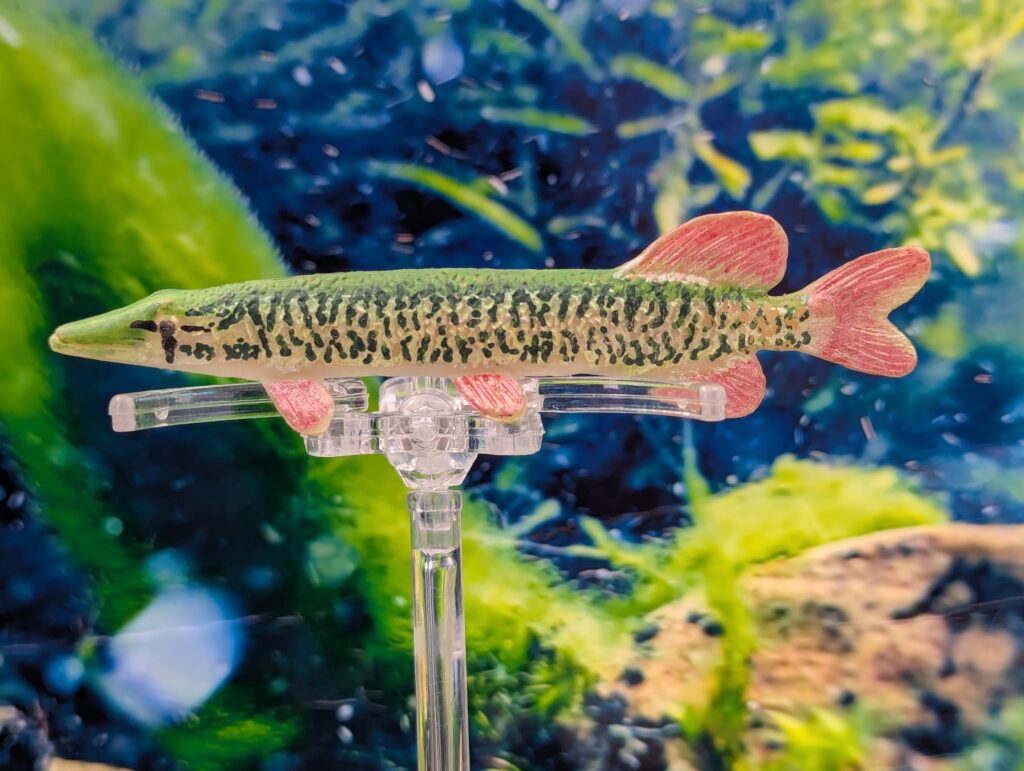
Here we are, the penultimate post for the Replica Toy Fish figures (unless I can get my hands on a few other prototypes that I know are out there). Like the previous prototype brook trout this model represents a very unique species, using an existing sculpt. As it is, I also received one paint prototype of a related species, also using that same sculpt. The main species of concern here is the chain pickerel, Esox niger; the prototype is the redfin pickerel E. americanus americanus. Pickerel is often used to refer to the smaller Esox species and subspecies, although they are overall very similar in general appearance and behaviour.
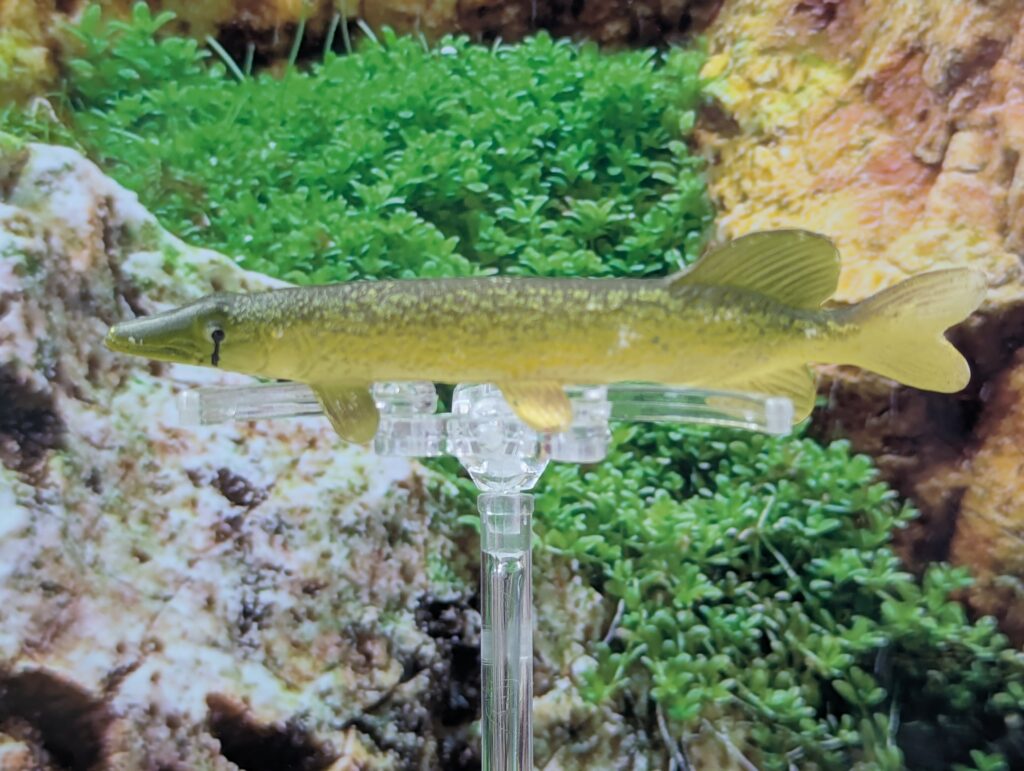
As with all other from the genus Esox (northern pike, muskellunge, tiger muskie) pickerel are sprint-ambushers that can be found in a range of freshwater habitats, including creeks and streams, ponds, lakes and swamps. The limiting feature is clear water with dense vegetation and overhanging cover to watch for prey and hide from predators. They are voracious predators of fish and, for chain pickerel, crayfish, but being smaller than their much bigger Esox congeners, can be prey as well, especially the redfin pickerel. Chain pickerel are usually around 60cm (24 inches) long, although can get to 78cm (30 inches). Redfin pickerel are even smaller, usually around 30cm (12 inches).
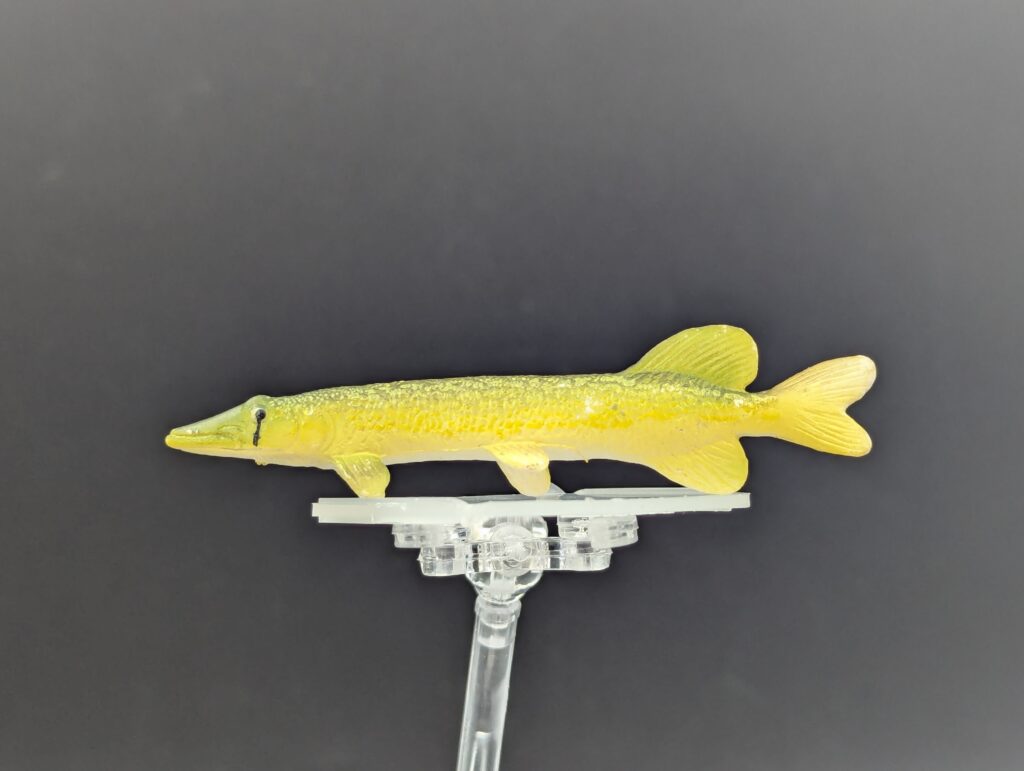
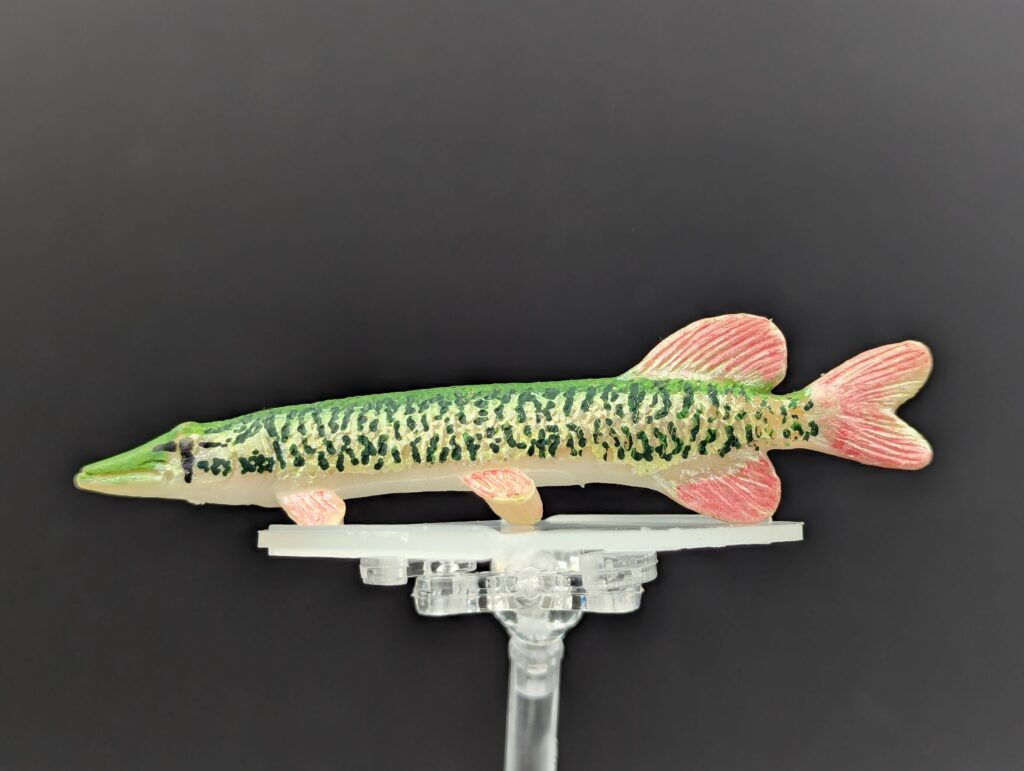
Both species are found along much of the eastern coast of North America and their distribution overlaps quite a bit. Chain pickerel range further north into the Canadian Maritimes and extend as far south as Florida. Redfin pickerel can be found from the Great Lakes region also through to Florida (the other subspecies, the grass pickerel, ranges further west to the gulf coast of Texas). In northern regions they can also overlap with northern pike; it can be easy to confuse similarly-sized smaller northern pike with large chain pickerel, without close attention to the opercula and cheeks (chain pickerel have scales there, pike do not). Both are listed as Least Concern by the IUCN; in Nova Scotia chain pickerel are considered invasive in some areas due to introductions that outcompete native species.
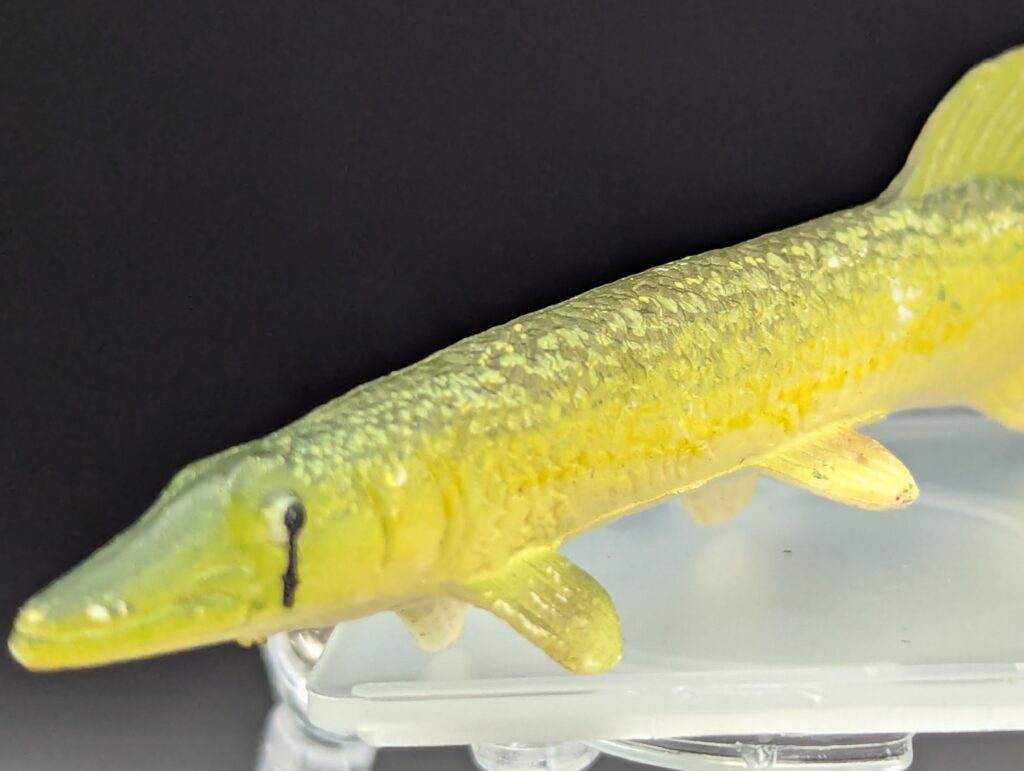
Discussing the sculpt of the figure does not change much from the description of the 3″ northern pike figure, as the same production sculpt is clearly the same figure. The cheeks and opercula are not noticeably scaled though, so this would be incorrect for a chain pickerel. Of course, at this size of a figure, at 8.7cm (3.4 inches) long it might be argued that the scales would probably be nearly invisible anyway. Depends on how picky you are! Given the sizes of the fish species, this would be the chain pickerel at about 1:7 scale (for a 60cm individual) and the redfin pickerel at 1:3 scale. Also worth noting the large and rounded dorsal, anal, and tail fins are fairly exaggerated even for a northern pike, but on pickerel the dorsal and anal fins should be squared more, and the tail fins should be more pointed. But they were working with an existing model, this is all they had!
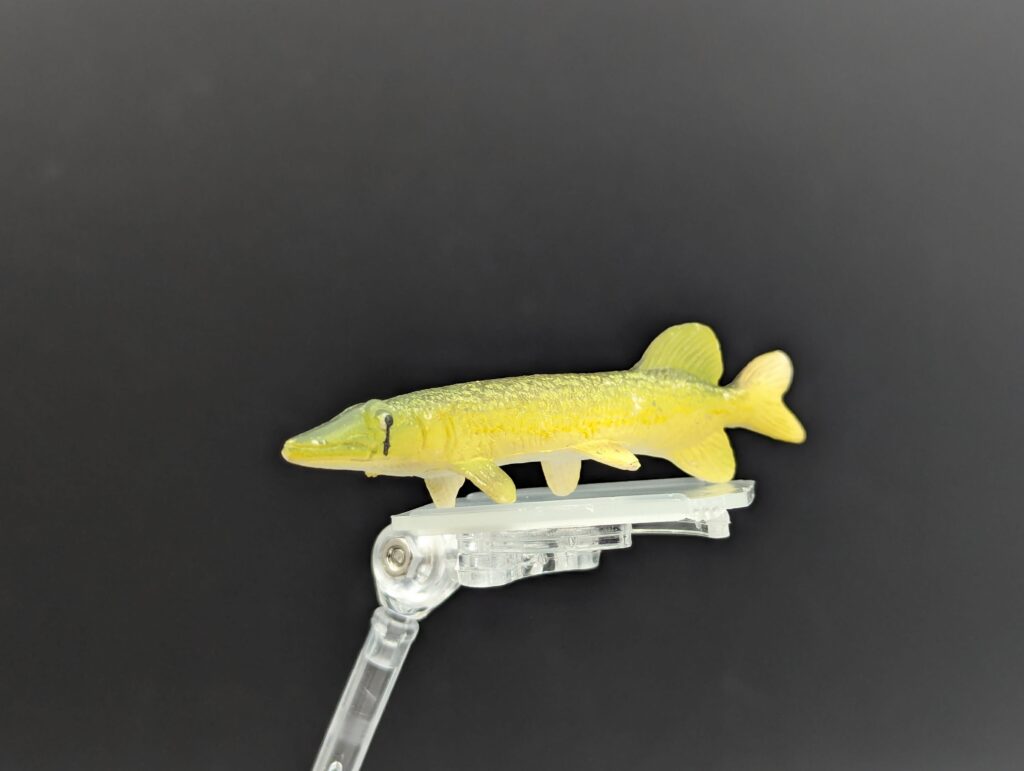
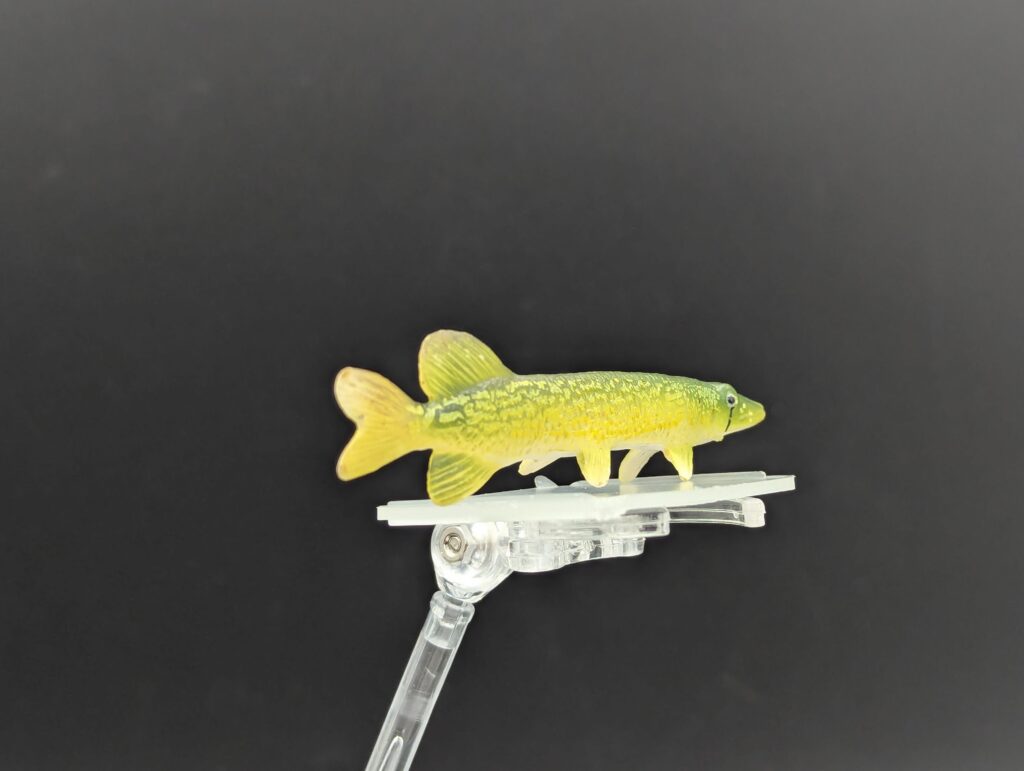
The obvious standout of the figures is the colour patterns. The chain pickerel is overall a lighter yellow on the sides, darkening to a deeper green on the back and across the snout, although the coverage is not consistent on the two sides. The belly is unpainted. The choice to leave the sides, especially the left, not as completely painted is unfortunate, as the chain-like pattern is not as readily visible. On the back and the right side the dark colour does a decent job of representing that characteristic linked-chain appearance that gives the species it’s name. The fins are pretty much left to base colour, with a greenish wash on the dorsal. The only other marking is a black eye and a black vertical strip below the eye–full disclosure, I painted that on myself. I had confirmed with the company owner that these were meant as chain pickerel, but that stripe was missing and is a key feature to distinguish a chain pickerel from a redfin, where the stripe curves posteriorly (and the fins wouldn’t be red…)
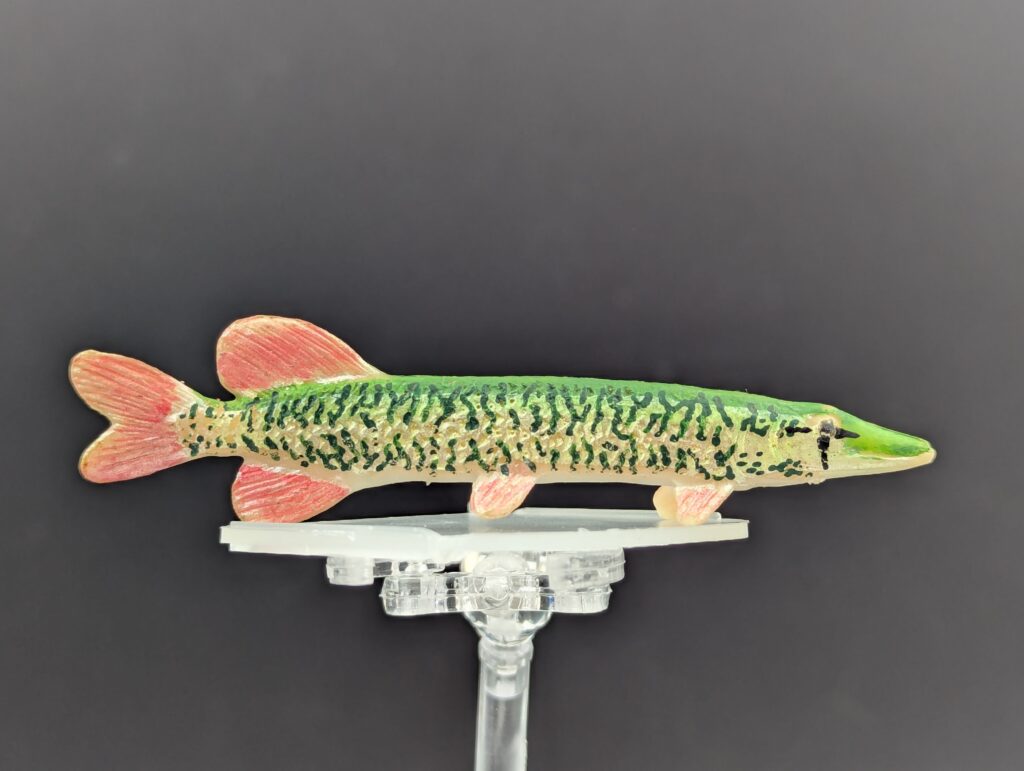
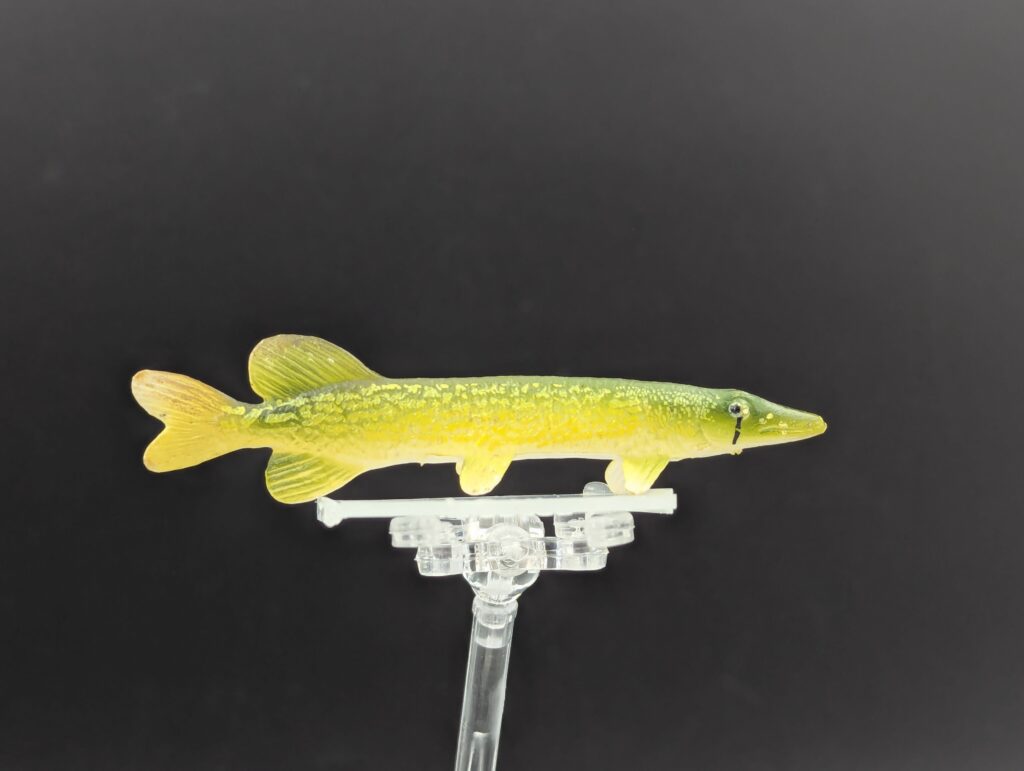
The redfin pickerel prototype has clearly had a little more care given to it in terms of colour choices. The body is overall a light cream (belly unpainted of course) with a green back and snout. Irregular dark green vermiculations extend down the sides, interrupted along the midline of the body. The fins are picked out in a light red as befitting a redfin pickerel. The eyes are marked by a horizontal line in front and behind, which are admittedly very exaggerated, as well as a vertical stripe below. The colouration has done a good job of clearly being a redfin pickerel, but that line below the eye should sweep backwards on the cheek, not straight down (or curved forward). This figure was not touched up by me, this is how it arrived, and I won’t be altering it! It’s one of a kind after all.
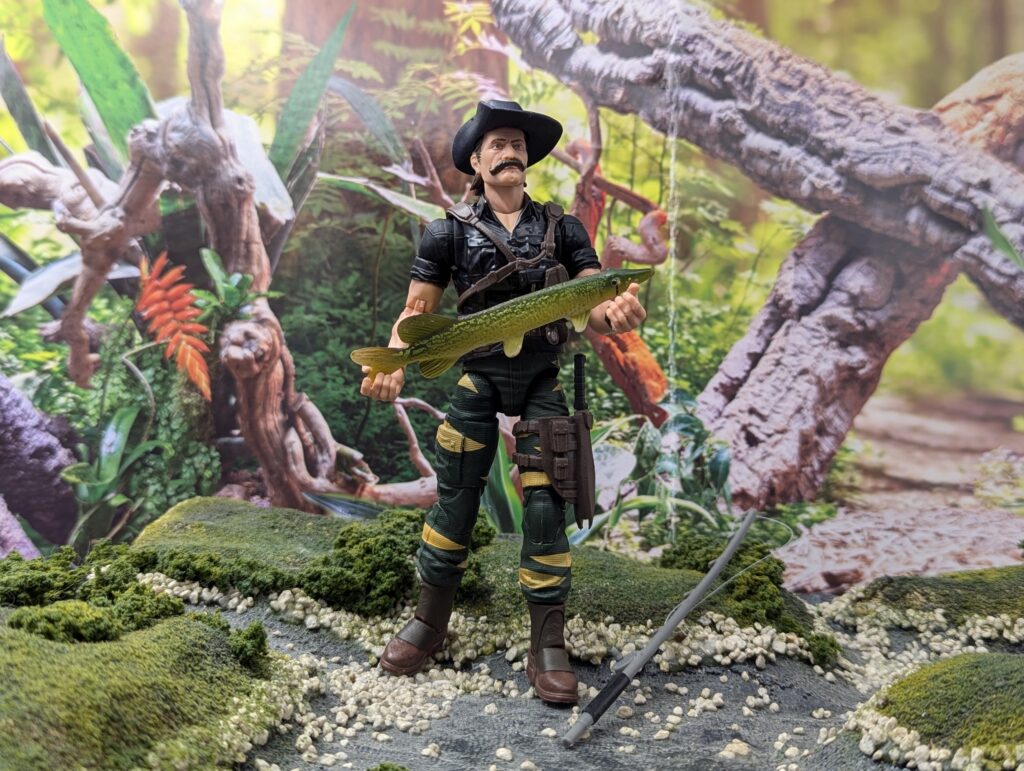
It was certainly interesting, upon receiving the ‘clearance’ parcel from Replica Toy Fish, to see a new species or two in the box, especially because I am not aware of any other pickerel figures at all. The chain pickerel did a decent if not stellar job of representing the species, and I was fortunate enough to receive a few–so while never fully release for sale, I did have a few up at one time (meaning, yes, there are a couple out there in the world!) As for the prototype redfin pickerel, well that’s the second rarest one I have from Replica Toy Fish, as it was the only one of it’s kind and I appreciate having it in the collection. I would have appreciated it more if these species had been made widely available, as I’m sure others would have, but we can just kind of hope someone else picks up the torch someday.
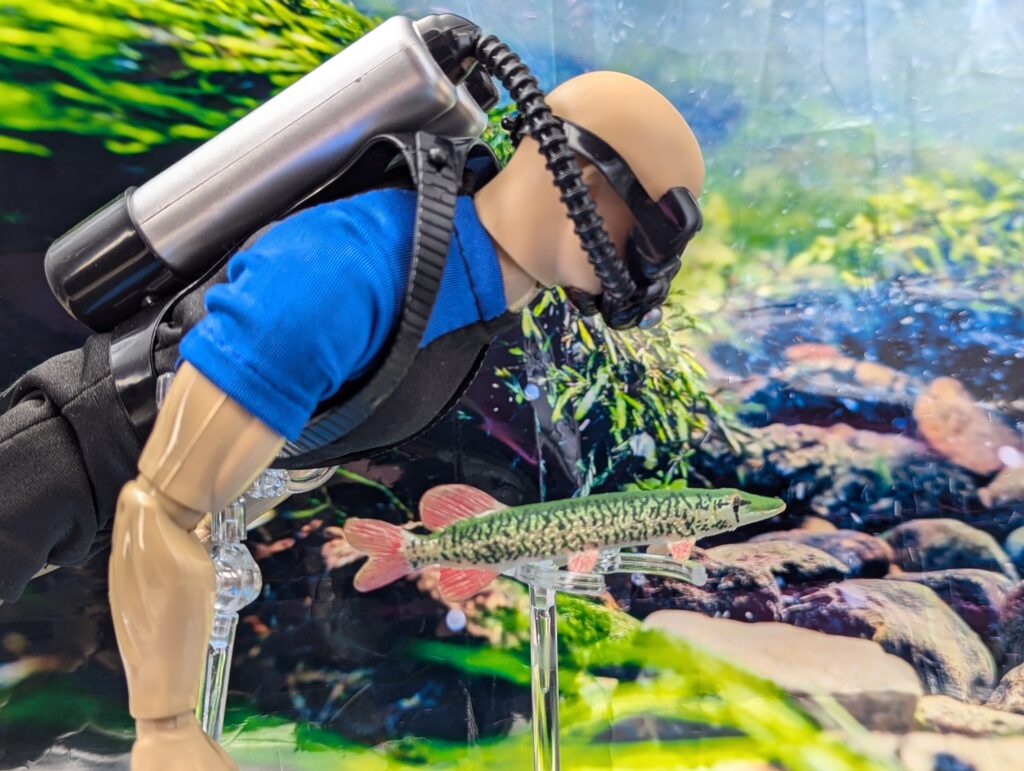
My next RTF post will be my last! I can’t believe it’s been this many. And looking back over all of these reviews, the last fish we’ll see is quite fitting given the first one I wrote about!
Disclaimer: links to Ebay and Amazon on the AnimalToyBlog are affiliate links, so we make a small commission if you use them. Thanks for supporting us!




Slime rockets! I catch a lot of chain pickerel, especially in the winder. I got a species award from the DNR for catching one that was 24.75″. As for the redfin, I’ve always wanted to keep one in an aquarium, or the grass pickerel. Someday…
They’re apparently small enough for that! If people keep gar, why not grass/redfin pickerels? Maybe not chains, they’re sort of big.
I did notice that chains have a lot of different names. Seems to happen a lot with fish that are 1) widespread in populated areas and 2) popular with anglers!
They’re small size is exactly why I want one. I’m not at all interested in keeping a chain pickerel.
Where I live the three pickerel are the only Esox species around and the locals call them pike. It kind of annoys me but I guess it’s not technically wrong, it just makes things confusing. The names that fishermen use are often annoying like that.
The first time I head ‘jackfish’ for Northern pike was confusing…I only knew jacks as marine fish. I guess pickerel are essentially just little pike anyway. If northern pike were in the area they’d probably use a different name! Which is possible further north. It must get confusing around the great lakes where not only all 3 pickerel and northerns are found, but also muskies!
If the RTF figures had been painted/sculpted a little more carefully they could have served as identification tools…!
Having lived in the Great Lakes region people seem pretty good about calling the different Esox species pike, pickerel, and muskie. Most people probably aren’t aware of the smaller pickerel species, I imagine.
I have never heard a pike called a jackfish before. But I’ve heard walleye called pike and that’s always irksome. Now living near the Chesapeake Bay I cannot get used to people calling striped bass “rockfish”, which just makes me think of the west coast Sebastes genus. I guess it works for the locals but they’ll always be stripers to this New Yorker.